Get ready to have more classes in the evenings
How the number of students is putting UU’s classroom allocation under pressure
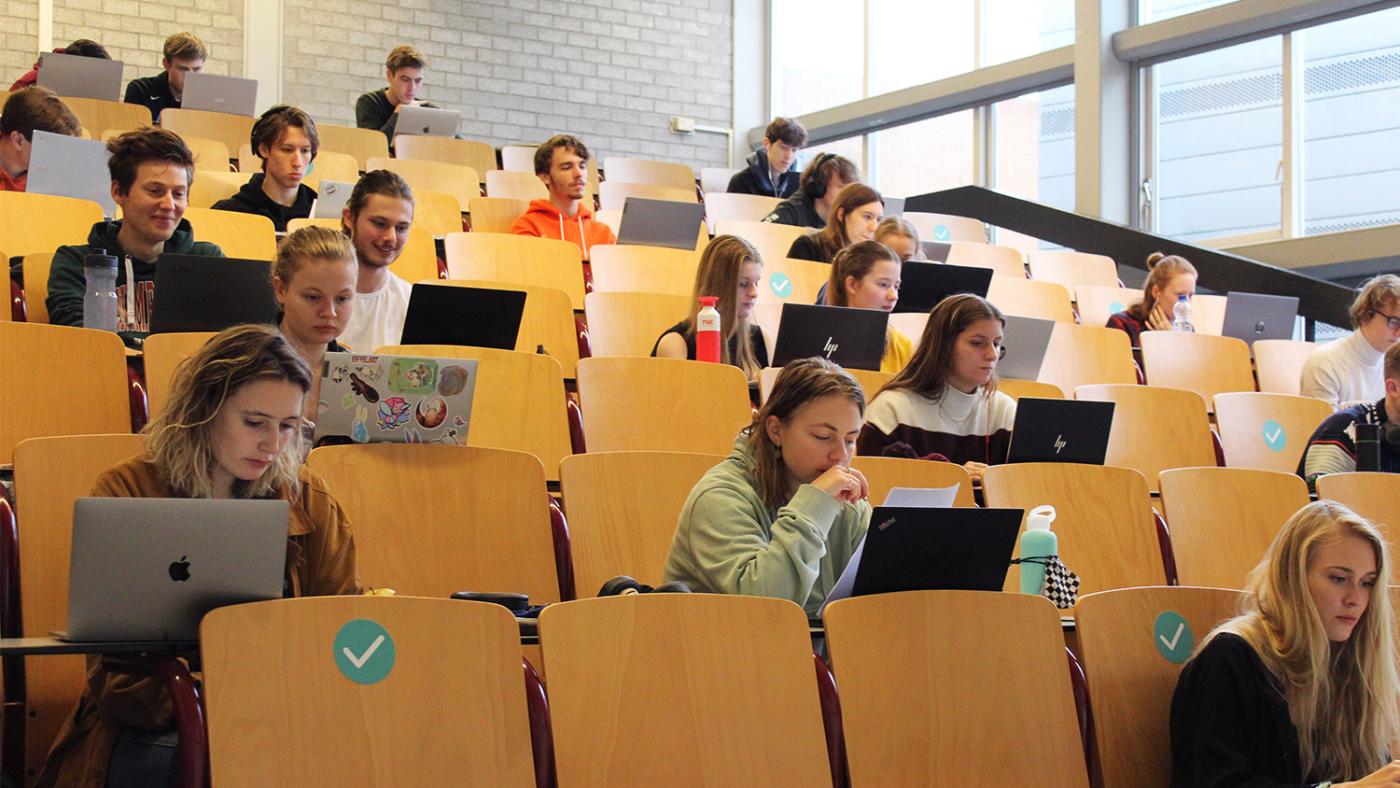
The explosive growth in the number of students during the Covid-19 pandemic has been weighing more and more heavily on the university's premises. Last year, DUB published an article about how evening lectures were becoming more frequent and whether online education was to become a structural affair. “The housing market is too tight, teachers’ workload is way too high and students will not always get the attention they deserve,” UU president Anton Pijpers declared at the time.
The consequences of the lack of space are noticeable now. The university has gone in search of additional teaching space and has rented buildings in the city centre for that purpose. It has also quickly turned around a temporary building on the parking lot at Padualaan avenue, in the Utrecht Science Park. Sporadically, students from the faculties of Social Sciences and Law, Economics & Governance are also taught in a movie theatre from the Kinepolis chain.
In addition, evening lectures have been occurring more and more often and the number of students and teachers having to travel longer distances in between lectures is rising because classrooms are often located far apart. A teacher told DUB that many of his colleagues have made changes to their classes because of the lack of space, coming up with online alternatives and splitting up groups, thus shortening the duration of the class.
The lack of space and the scheduling problems have led to a state of dissatisfaction and angry responses from teachers and students alike. Teachers think it's "painful", "embarrassing" and "unacceptable" that classes must be offered online due to a lack of lecture halls. Before the last summer break, it was confirmed that the temporary building at Padualaan avenue would not be finished in time but the scheduling problems remained limited in the following academic year and teachers were still able to teach their classes in person.
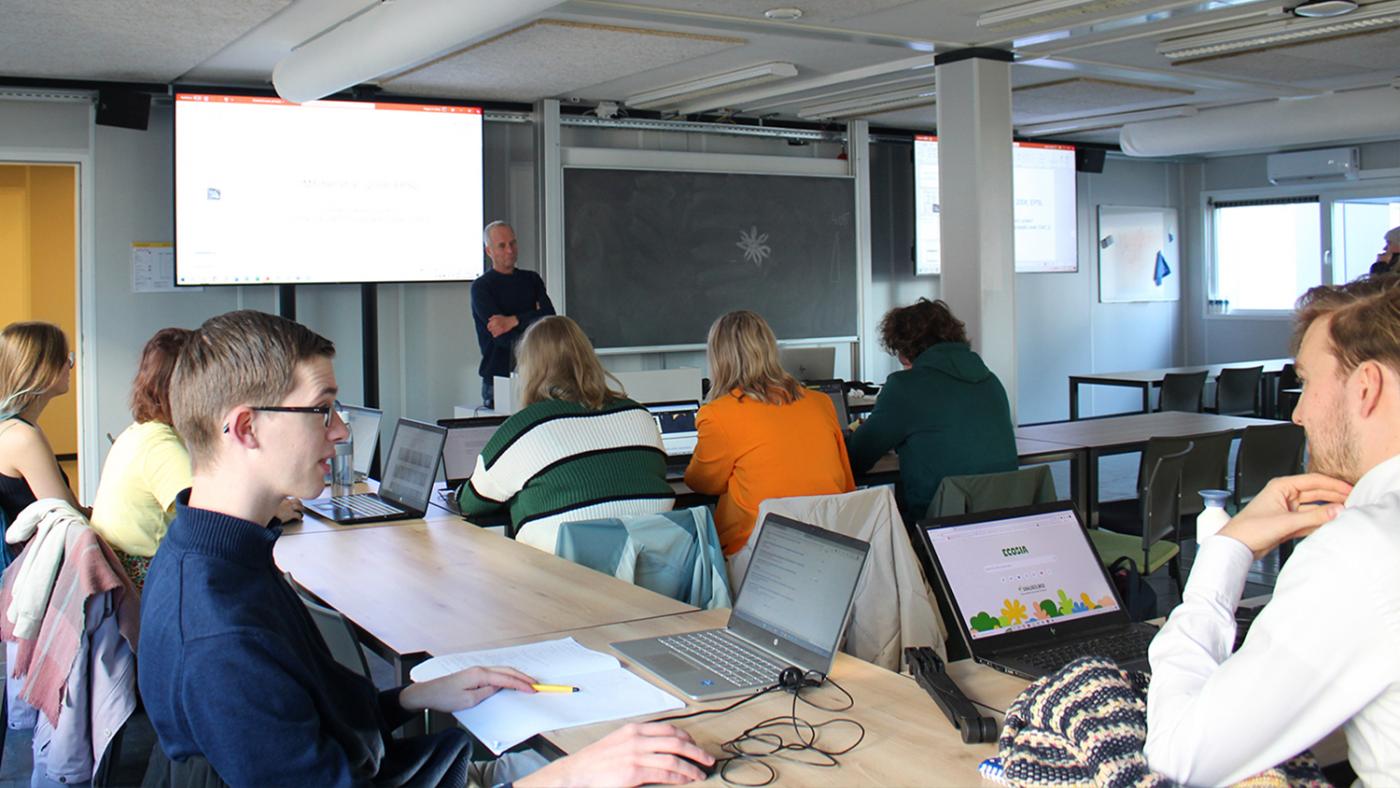
Students being taught in the temporary container building on Padualaan Avenue. Photo: DUB
Evening lectures cannot be used as a structural way to combat the lack of space, argues teacher Siebren Teule. Teachers and students are both afraid that more evening lectures will mean more work to do. That timeslot also affects students' social lives as it often coincides with activities organised by student, sport and study associations. The president of the student faction of the University Council, Jon de Jager, fears that evening lectures will happen to the detriment of the “relaxation, rest and personal enrichment” of students.
How did the lack of education space come to be?
The rising number of students is the main reason for the lack of lecture halls, states UU. The most recent real estate strategy, from 2021 (PDF in Dutch, Ed.), details that such steep increases were not anticipated a few years ago.
“The number of students grew faster than we had anticipated,” explains Marieke de Bakker, Head of Student Affairs. That’s due to several outside factors that ended up influencing the influx of students. "Brexit was one of the things influencing the number of students coming from abroad. In addition, many students decided not to take a gap year because of the Covid-19 pandemic. Finally, the introduction and abolition of the student loan system in the Netherlands impacts the number of enrolments. It is hard for the university to forecast the effects that this will have on the number of students."
The influx of both Dutch and international students has led to “increased pressure on classroom allocation," writes the Executive Board in a note sent to the University Council at the end of October (accessible only to those with a Solis ID, Ed.) needed to read). The university needs to hire more teaching staff while the pressure on the university budget is increasing. According to the board, funding for education has not grown "according" to the rise in the number of students.
In two years’ time, the number of students at UU increased from some 33,000 in 2019 to almost 28,000 in 2021, a substantial growth of 16 percent. By comparison, the two previous years, 2017-2019 saw an enrolment increase of 1,800. Although the Covid-19 pandemic caused a peak in the number of enrolments, a slight increase was already noticeable before then.

The total number of students at UU between 2012 and 2022.
The most significant increases during the pandemic happened in the faculties of Humanities, Social Sciences, and Law, Economics & Governance (link only accessible with a Solis ID). In 2019, a total of 1,130 first-year students joined the latter, while in 2020 this number had grown to 1,656. Social Sciences saw 3,647 first-year students at the Bachelor's level in 2019, a number that rose to 4,747 in 2022.
In 2020, amidst the pandemic, the programmes Social Sciences and Pedagogical Sciences grew 16 and 22 percent, respectively. At the faculty of Law, Economics & Governance, the sharpest increases were seen in the programmes of Law (which grew 57 percent in 2020) and the Utrecht School of Economics (24 percent).
But the growth most worthy of attention is the one that concerns the number of international students: since the academic year 2018-2019, the number of foreigners enrolled in UU's programmes has risen by 67 percent, which means 886 students more. In 2020-2021, 13 percent of all UU students came from abroad, which means a total of 4,846 students.
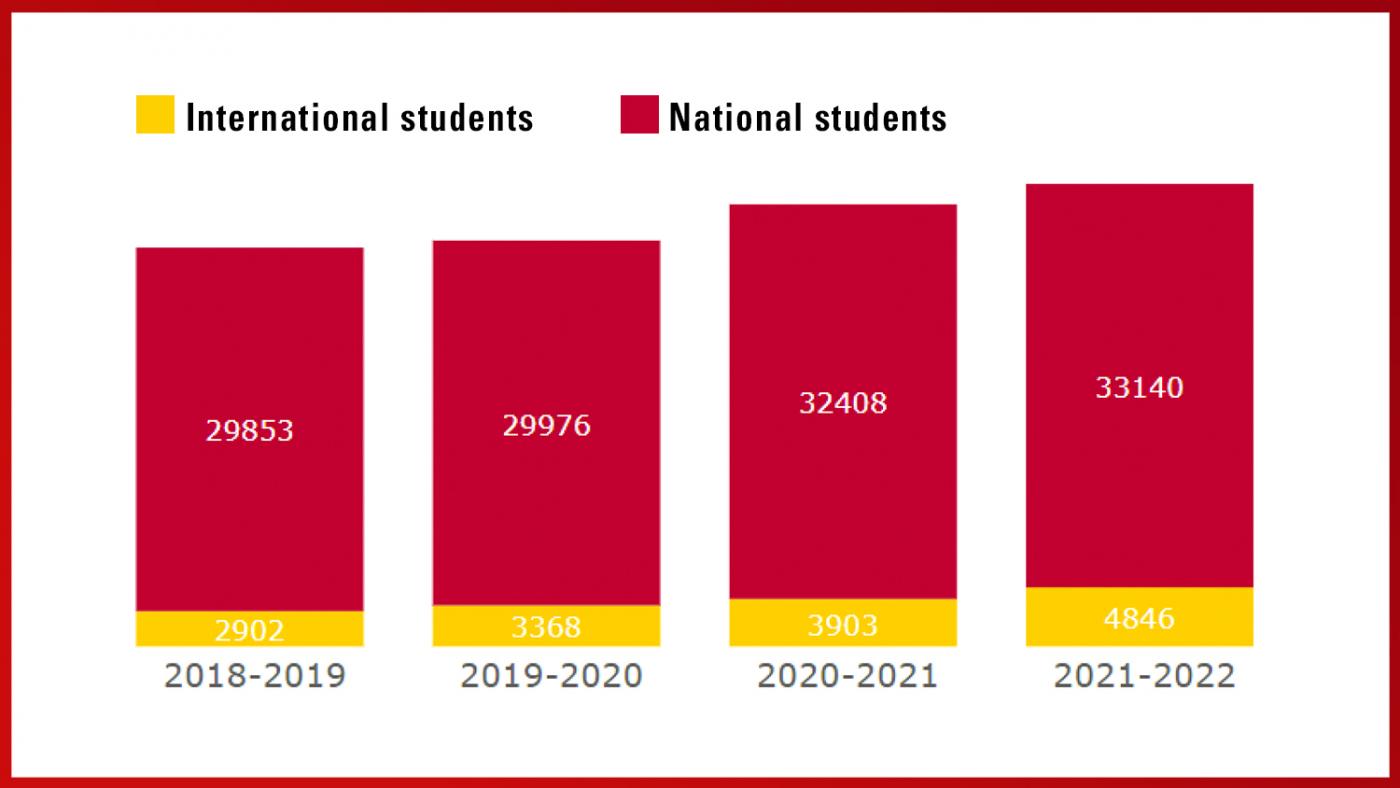
The number of international students compared to the number of Dutch students at UU in 2018-2022.
The internationalisation of Dutch higher education has been a topic of widespread national debate for quite some time, as universities struggle with the intense influx of international students. UU would like the EU to limit the number of international students allowed to enrol in Bachelor’s programs, as that's the fastest-increasing subgroup. The Executive Board is even considering scrapping some of UU's English-taught Bachelor’s programmes entirely.
Even so, the number of students is still set to rise over the next few years. Until 2027, UU may grow a further 10 percent to a total student body of 41,500 individuals. After that, the numbers are expected to stabilise due to the dropping number of young adults in the Netherlands. As for the influx of international students, that is a bit more “difficult to predict”, according to the Executive Board.
What will the university do to combat the lack of lecture halls?
In 2018-2028 the number of students at UU is expected to grow by 30 percent. The future need for lecture halls will definitely outweigh the current available space, according to UU's latest housing strategy.
Although the university has gained and will continue to gain thousands of students, it does not intend to build or buy any additional classrooms. Instead, the university prefers to keep teaching its students in the existing buildings. "Money going to new rooms is money not going to education and research" seems to to have been UU's reasoning for years.
Nevertheless, UU acquired two new buildings in October 2021. There will be new classrooms at Nicolaaskerkhof and Vroujuttenhof, both in the city centre, part of which is set to be inaugurated in September 2023.
"The buildings were an opportunity we couldn't miss," explains Margot van der Starre, Vice-President of the Executive Board. "The city centre remains a challenge because there are faculties there that do not have enough space and we may have to dispose of another building in the area.”
Better schedule
UU wants to deal with the rising number of students with "organisational measures", according to the latest strategy. Thanks to a more efficient schedule, the university hopes to better utilise the rooms it already has. In addition, it intends to rent additional teaching spaces for some time, as well as offer more classes in the evenings.
Although online education is mentioned in the strategy as a means to address the issue of the lack of classrooms, according to De Bakker, that's not in the works. She says online classes are deployed "if they contribute to the quality of education, not to save space." She adds: "It is possible for some faculties to choose online education for this reason but that is not a university-wide policy."
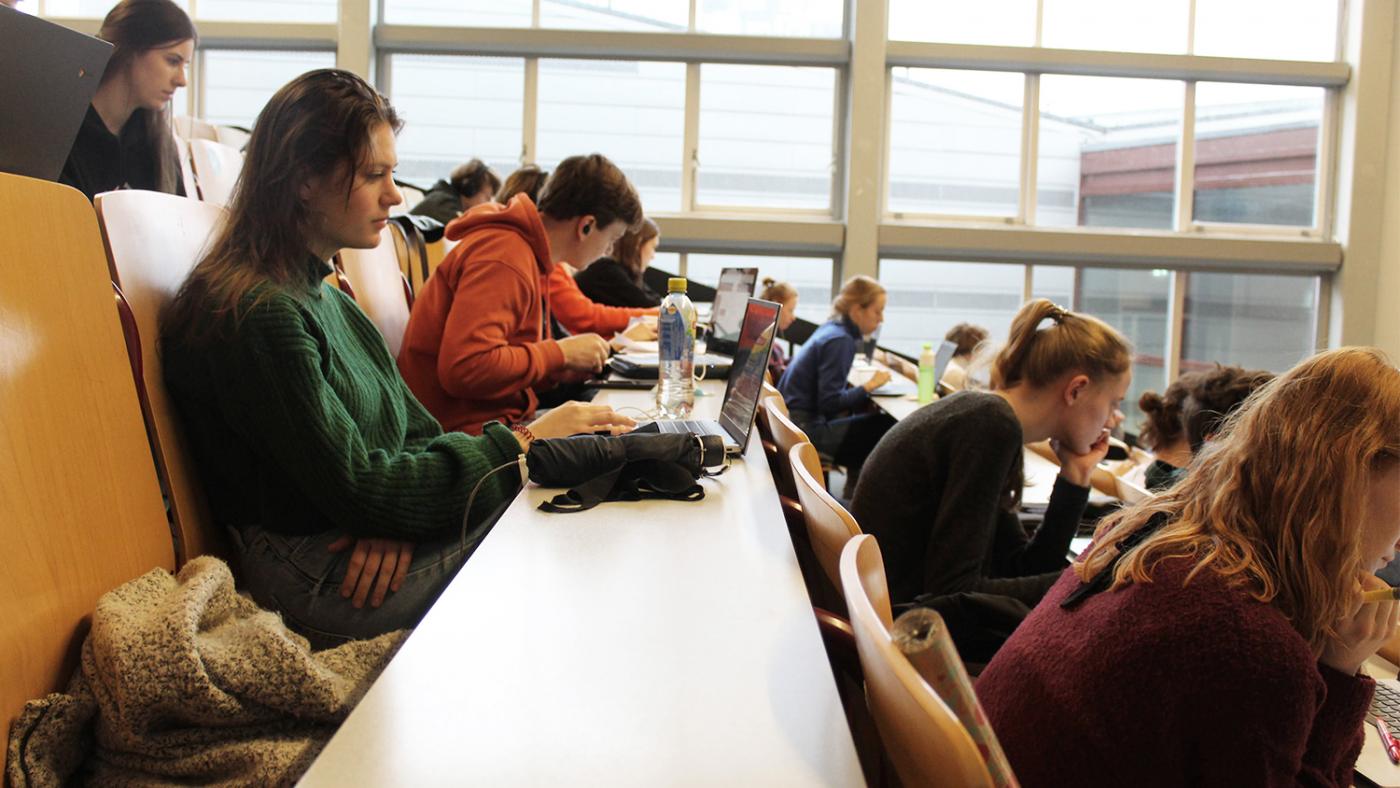
Students attend lectures in Behavioral Biology in the temporary building on Bolognalaan. Photo: DUB Archive
"A more efficient schedule is our number one priority," explains De Bakker. "We know there's still a lot of progress to be made by making better forecasts and being more flexible in the way we schedule things. Currently, a teacher often has to make a scheduling request six months in advance, even though the planning isn't definitive yet. That way, the scheduler has to start things all over again. As a result, teachers play it safe by making more requests than they actually need, so there is room for improvement there."
"Tuesdays and thursdays are really busy days when it comes to occupancy. But there is an incredible amount of space on Fridays and the early evening timeslot, between 5:00 and 7:00 pm," De Bakker says. "It's not correct that there is no space at all and everything is full."
"This is only going to work if we make better use of the spaces we already have thanks to a better schedule," adds Van der Starre reacting to the first results of a research into the occupancy of lecture halls across the university. The results are not representative. According to the vice-president, it wasn't clear whether Covid-related measures would make classes on campus impossible, which is why less classes were scheduled in person on the first block. In other cases, the university was not sure if temporary rooms would be delivered in time, such as the ones at Padualaan.
"The measurements become more reliable as the year goes by. On the basis of hard data, we can say: is there a shortage? If so, is there a shortage of tutorial rooms or lecture halls?” explains Van der Starre.
According to De Bakker, the city centre is "an exception" as there really is a shortage of certain rooms there. At Humanities, the early-evening slot is rather common. It's always been like that: classes in the evenings and on Saturdays were offered due to the part-time programmes that used to be offered long ago."
Room allocation strategy
To understand UU’s choices, we have to go back to 2017 when the first room allocation strategy came along. At the time, UU owned a number of large, old buildings from the sixties and seventies that were badly maintained and used up a lot of energy.
It was called the "Big Five" problem: the Kruyt building, the Androclus building, the Van Unnik building, the geosciences building and the Went building – which was demolished in 2013 – were at the end of their lifespan. A couple of buildings had asbestos.
Back then, UU was heading for a billion-euro investment. In addition, increasing housing costs, which included energy costs, the rent of external buildings, interest, insurance and cleaning bills, had risen to around 20 percent of UU’s turnover.
The costs increased too quickly due to a "let's replace things when needed" approach, UU's President Pijpers explains to DUB. Moreover, the older buildings were responsible for a great chunk of the energy bill, which was incongruent with the UU’s ambition to be carbon-neutral in 2030.
To limit housing costs, the Executive Board wrote the first housing strategy in 2017, which stated that the cost of living could not be higher than 15 percent of the university's turnover. At the time, UU also set aside a staggering 720 million euros for investments. University council member Diederick Raven, who was directly involved with the devisement of the strategy, was satisfied with the proposed long-term vision.
Two years later, decisions were made about what to do about the remaining buildings of the Big Five problem. The Van Unnik building was to be renovated, while the Kruyt building would be redeveloped for 100 million euros. The Androclus building, used by departments of the Faculty of Veterinary Medicine, would be demolished and replaced with a new building, while the Heijmans van den Bergh building, used by the Faculty of Medicine, would be renovated.
The board also wanted to shrink the size of the premises, so it decided to scrap a third of its buildings, which amounted to 70,000 square meters (a total of ten football pitches). Most of it was dedicated to office spaces that were considered too big, not to mention occupation was low. Personnel was asked to work part-time from home, a development furthered by the Covid-19 pandemic.
Moving faculties
A significant number of faculties had to be temporarily relocated to different buildings. These relocations also caused space shortages and scheduling problems.
"This makes scheduling extra hard," says De Bakker. "The growth in the number of students is real and we prioritise classes in person. And then you have these renovations on top of that. That's challenging because lecture halls are not up for grabs."
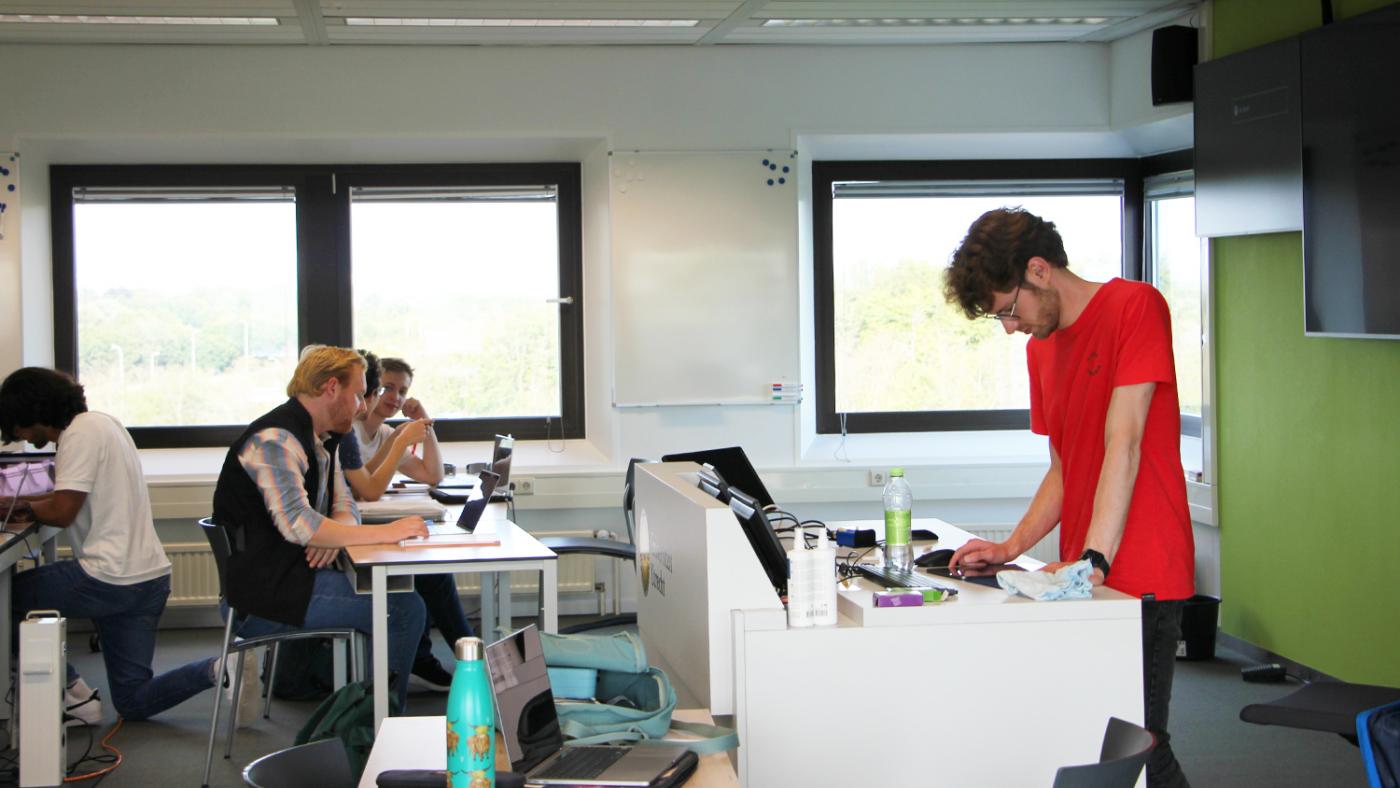
Studenten krijgen les in het tijdelijke pand aan de Daltonlaan 500.
The Faculty of Medicine was moved from the Heijmans van den Bergh building to Bolognalaan during the renovation works, which started this year and will probably last until the summer of 2023. The faculties that teach in the Heijmans van den Bergh building needed to be moved elsewhere too. The temporary building at Padualaan was to be used for this, but due to the delay in its inauguration, there are scheduling problems in the first semester.
Moreover, UU rents additional education space to accommodate the influx of students, such as the buildings at Daltonlaan 700 and Daltonlaan 500. The latter, which will be rented for five years, has fifteen workgroup spaces, fifteen project spaces and 56 workspaces for individual students. In addition, UU is also renting spaces in the conference complex Vredenburg and a Kinepolis movie theatre.
What do the faculties think of all this?
In the long term, UU wants to move towards “a more efficient use of the buildings” even though most faculties are reluctant to schedule evening lectures and offer online education.
Practically none of the faculties are going to offer additional classes online, except for Law, Economics & governance where "there is an acute lack of space due to the sudden and significant increases in the number of students”, in the words of a note to the University Council written in February 2022. To successfully accommodate the many students in the current buildings, around 30 percent of classes will be online in 2030.
The Faculty of Science has begun to offer “slightly” more online education, “partly due to the housing shortages”, says Vice-dean Bert Klein Gebbink. In the long term, the faculty will offer “in-person education as much as possible” as it “would not be happy” if it was forced to turn to online education due to room allocation problems, although it “can’t rule out that possibility” if the need arises. As for Social Sciences, it has also not started offering more classes online in a structural manner, says Dean Marcel van Aken. The faculty will do so only if scheduling becomes impossible, but “that is an exception”. Humanities isn't offering more classes online and it does not intend to do so either, according to Cathelijne Habets, Head of Administrative and Policy Education. The faculty has got more rooms from Real Estate & Campus.
Evening lectures
The faculties of Law, Economics & Governance and Social Sciences have scheduled more classes in the evenings due to the shortage of rooms. In the first semester, around 50 percent of the evening slots were used by Law, Economics, Governance workgroups, says Dean Janneke Plantenga. “We have also scheduled more evening lectures.” According to Plantenga, there have been no agreements about the number of evening lectures that will be scheduled in the future, but the faculty “sees the need for a better use of the available timeslots”.
At the Faculty of Social Sciences, it has been agreed that 15 percent of classes will need to be scheduled in the evenings in the first semester. In the second semester, this will be 10 percent, Van Aken says.
The Faculty of Humanities has been using the 5:00 to 7:00 pm timeslot more often, as it is a regular timeslot, Habets says. The housing shortages are not “the biggest argument in favour of this decision”. The faculty is not planning on using this timeslot more often in the future.
The Faculty of Science is reluctant to use the evening time slots because it “increases the workload” for both students and teachers, according to Klein Gebbink. “This timeslot won’t be used until all the other possible timeslots have been filled. At the moment, it is used only occasionally.”
The Medicine and Veterinary Medicine faculties have had no increases in the number of students due to the fact that their programmes have a set number of students (a practice also known as numerus fixus). Consequently, tjey have had no classroom shortages, say Berent Prakken, Vice-Dean of the Faculty of Medicine, and Marlise Mensink, Director of Education and Student Affairs at the Faculty of Veterinary Medicine.